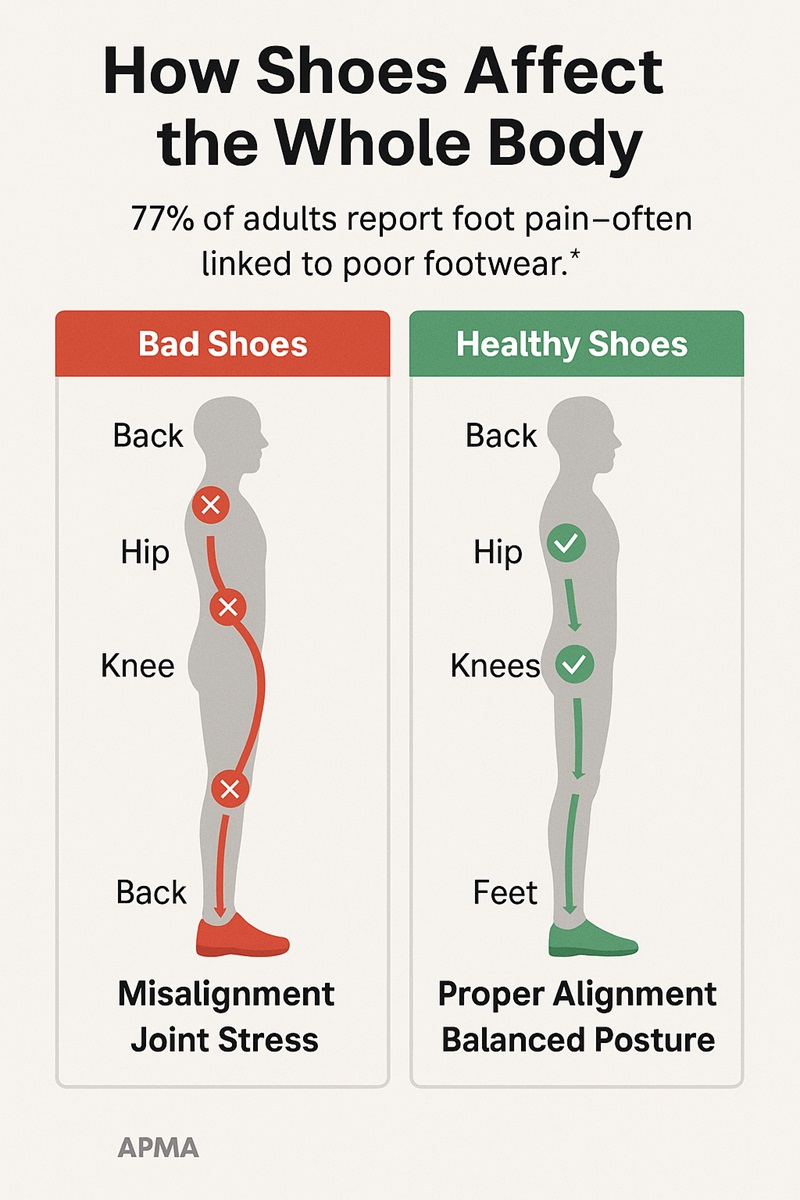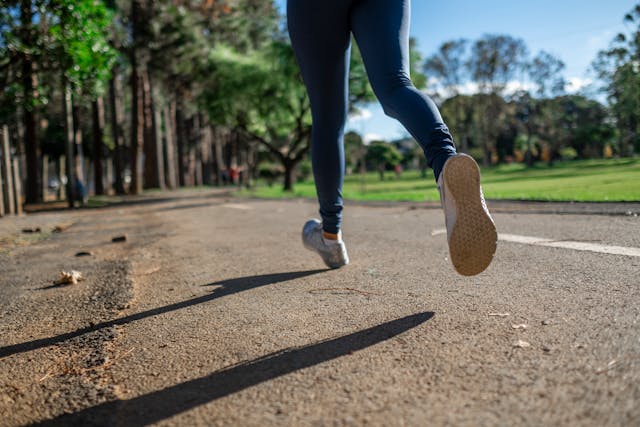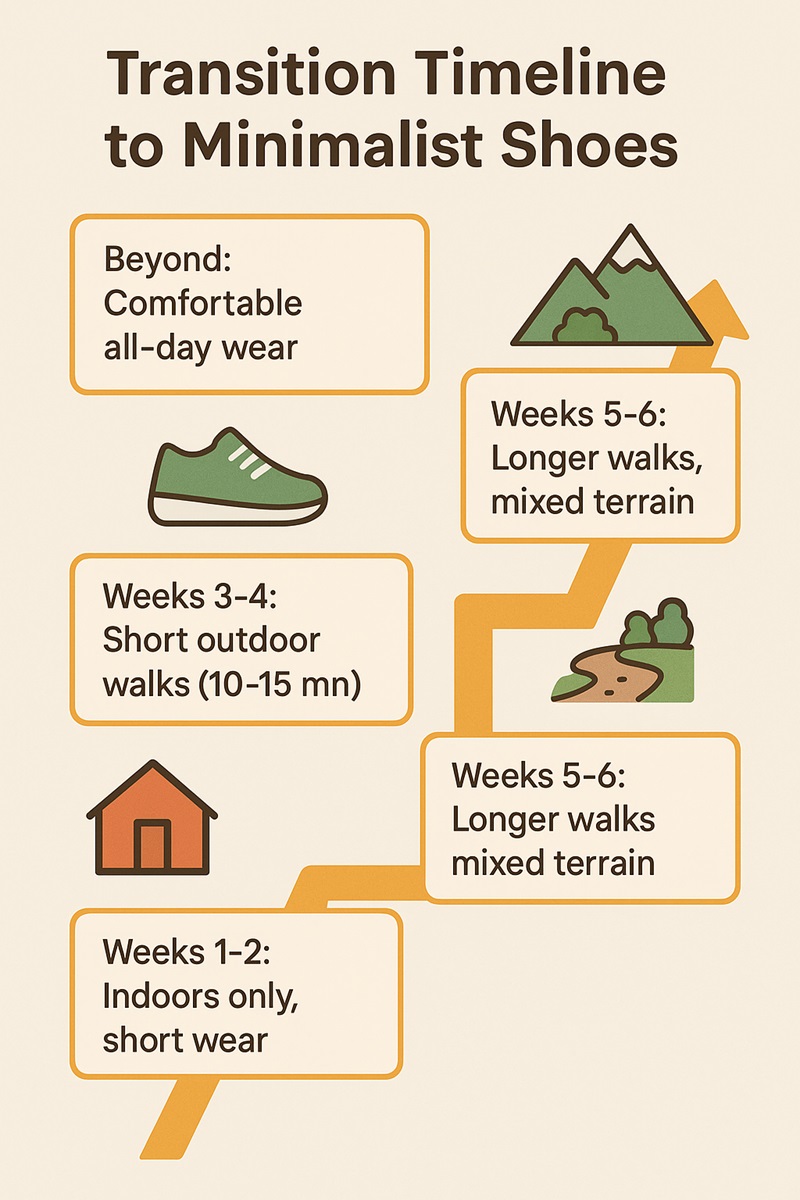Look, nobody wakes up thinking about their footwear choices. But maybe we should, because the shoes most of us wear every day are kind of terrible for our bodies.
Here’s what happens: bad shoes don’t just hurt your feet. They throw off your knees. They mess with your hips. They can even be why your back aches after a long day. And the worst part? This damage accumulates slowly, so by the time you notice something’s wrong, you’ve been doing it to yourself for years.
What Makes Regular Shoes So Bad
Most shoes are built wrong. Heels push you forward. Stiff soles don’t bend. Tight toes squeeze your feet. They may look fine, but wear them for years and your body pays.
Studies in the Journal of Foot and Ankle Research show how regular shoes change the way we walk. They put stress on joints that should stay free. Over time, this stress can cause joint wear, poor balance, and lasting pain.

The Science of Foot Mechanics
Your feet are amazing. Each foot has 26 bones, 33 joints, and more than 100 muscles, tendons, and ligaments. The arches and flexibility are built to absorb shock, spread weight, and keep you steady.
Shoes with heels or hard soles disrupt this system. Arches weaken. Toes get cramped. Stabilizing muscles switch off. That’s why many people end up with plantar fasciitis, bunions, or hammertoes.
Foot Problems From Regular Shoes
- Plantar Fasciitis – Heel pain made worse by poor arch support.
- Bunions & Hammertoes – Narrow toes force unnatural positions, leading to deformities.
- Poor Balance – Stiff soles block ground feel, making trips and ankle rolls more likely.
- Knee & Back Pain – Heel lifts push stress upward into the body.
The American Podiatric Medical Association reports that 77% of U.S. adults have foot pain. Much of it is preventable with better shoes.
How Minimalist Shoes Work
Minimalist shoes flip the script. Flat sole. No heel lift. Wide toe box. Flexible material. They move with your foot instead of against it.
Your muscles must work again, which makes them stronger. Balance improves. Walking feels natural. Studies even suggest fewer bunions and better body awareness. That means fewer rolled ankles and more comfort every step.
What to Look for in Healthy Footwear
If you’re shopping for shoes with foot health in mind, look for these features:
- Zero-drop sole – No height difference between heel and toe.
- Wide toe box – Toes should spread naturally, not squeeze together.
- Flexible sole – Allows natural foot movement and ground feel.
- Lightweight material – Prevents unnecessary strain and supports balance.
- Breathability – Natural fabrics or mesh improve comfort and foot hygiene.
Brands like Vivobarefoot, Xero Shoes, and Lems are often recommended by podiatrists for meeting these criteria—but always check that the model actually fits these principles.
Your Feet Are the Foundation of Everything
And it’s not just about feet in isolation. Everything connects. Your feet are literally the foundation. When they work right, that stability ripples upward. A lot of people with chronic knee or back problems find relief once they fix what’s happening down at foot level. It sounds too simple, but it’s true.
The Problem With “Barefoot” Marketing
The market’s flooded now with “barefoot” shoes, and half of them are garbage. Companies slap the label on anything and hope you won’t notice it’s still basically a regular shoe. You need to know which brands actually understand foot anatomy and which ones are just chasing a trend. Sites like Barefoot Brands help sort through the noise by spotlighting companies that genuinely get it.
Take the Transition Slowly
Fair warning though—don’t just throw out all your shoes tomorrow and go full minimalist. If you’ve worn cushioned shoes your entire life, your feet are weak. They need time to build strength. Transition slowly or you’ll hurt yourself. Think weeks or months, not days.
A Simple Transition Roadmap
- Weeks 1–2: Wear minimalist shoes indoors for short periods.
- Weeks 3–4: Add short outdoor walks (10–15 minutes).
- Weeks 5–6: Gradually extend walk times and vary terrain.
- Beyond: Build up to all-day wear, listening to your body along the way.
When to See a Specialist
If you already struggle with chronic pain, severe bunions, or flat feet, talk to a podiatrist or physical therapist before making major footwear changes. A professional can assess your gait and guide you through strengthening exercises that make the transition safer.
The Bottom Line
The point is this: good shoes don’t do more. They do less. They protect your feet from the ground without trying to “fix” how you walk or “support” muscles that should be supporting themselves. The healthiest footwear trusts your body to work the way it’s built to work.





